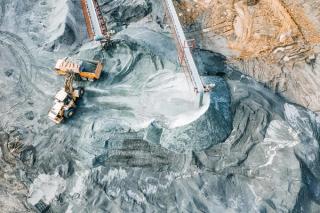
Cultural heritage: Indigenous and cultural heritage values driving sustainable development
by Flavia Kiperman
View post

This is the second in a four-part series on ESG in Mining. If you missed the first part, catch up with our Global Mining Sector Leader, Dave Walker’s article, What does ESG mean for the Mining industry?
ESG (environmental, social and governance) issues are rising up the agenda for companies in the mining and minerals industry. Here are four reasons why we think a proactive response on ESG will benefit any mining business.
1: Investors, lenders and customers care about ESG
In our experience, today very few transactions are done without a review of ESG issues. Responsible investment and buying are a reality and investors, lenders and customers now want to see and be kept informed that ESG issues are in hand. This need to demonstrate a track record of good ESG performance will now only increase; and failure to act positively will ultimately reduce access to customers and funding and/or increase the cost of funding. Good ESG = more and cheaper funding for your next project.
2: Governments, regulators, NGOs, employees, communities… are watching too
Internal and external stakeholders are increasingly demanding transparency and performance on ESG issues. Mining and mineral businesses and their stakeholders face challenges on many fronts including performance related to climate change, energy, water, sanitation, land use, ecosystem services, food, education, health, local infrastructure, vulnerable people, and corruption.
Priorities will be specific to each company and even individual mine sites, but having the interests and agenda aligned for all stakeholders can only help everyone involved.
3: You avoid the inevitable risks that come with poor ESG performance
No one likes taking on unnecessary risks, especially when it can disrupt or even halt a critical project. Here are just some of the ESG risks that can be avoided if you manage this agenda proactively:
4: You benefit from significant opportunities through strong ESG performance
ESG is not just about managing or avoiding the downside. There is also plenty of upside potential to go after, including:
The next step for any mining business now should be not only to work out where the key ESG risk and opportunities are, but also to put that agenda into action, make improvements and realise the benefits for all.
Read part one: What does ESG mean for the Mining industry?
Read part three: How to tackle ESG risks and opportunities in the Mining industry?
Read part four: Practical steps for tailings on your Mining ESG journey

by Flavia Kiperman

by Jasper Schrijvers , Matthew Hoare

by Clodagh Connolly, Nicola Inge, Andres Schottlaender